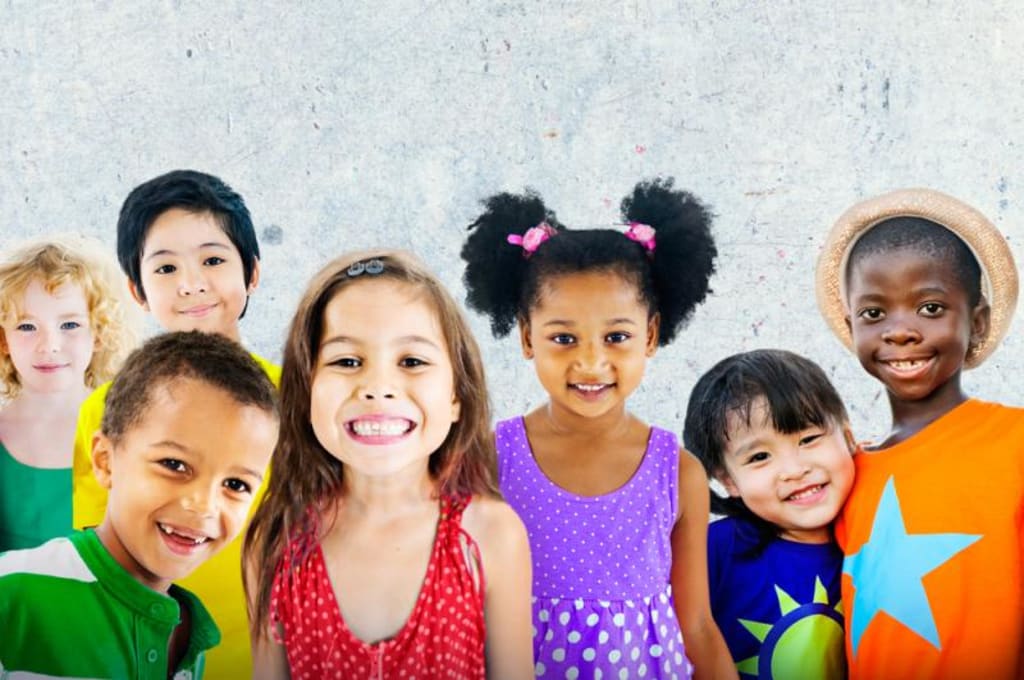Diversity. Equality. Inclusion. (In a Children's Setting)
Diversity, equality and inclusion when working with children

Diversity - Different types of people being included in something; a range of different things or people
Equality - The right of different groups of people to have a similar social position and receive the same treatment
Inclusion – The idea that everyone should be able to use the same facilities, take part in the same activities, and enjoy the same experiences, including people who have a disability or other disadvantage .
How legislation and codes of practice relating to equality, diversity and inclusion apply to own work role:
The Equality Act 2010 brings together all previous acts relating to equality and discrimination. The act applies to a nursery as the nursery provides a public service. The Act protects all individuals and groups from discrimination. Early years settings (a nursery for example), must be aware of these laws and have in place a policy regarding equality of opportunities and for supporting children with learning difficulties and disabilities. The EYFS also states that the nursery has a responsibility to ensure positive attitudes to diversity and difference. Within my setting we have an Equality and Diversity policy and disability policy. These policies must be followed by staff and integrated into our working practice. The policies bring together all the main points from the various acts and the requirements of the EYFS.
How prejudice and discrimination may affect a child’s life chances:
Each child has a right to grow up with as much access to opportunity as each other child
Lack of equality of opportunity limits children's life chances and denies society the full benefit of their potential skills and talents. Prejudice leads to suspicion and disharmony between individuals and groups of people, and abuse (verbal and physical) directed against individuals. Unhappiness and harm is widespread when there is no value of inclusion and diversity at the nursery.
Children who grow up being interested in people who are different from themselves and learning about differences in a positive way are less likely to become prejudiced adults. They develop respect for others, and do not see people who look different from themselves, or live life differently from them, as a threat or a source of fear. If a person is prejudice or something similar, they themselves shall have a hard time finding a role for them as more and more people are going against discrimination in the work place and employees will not employ someone who is prejudice.
Potential barriers to implementing equality in early years settings
The are barriers that will implement equality within an early years setting. For example, language barriers. If a child is within an English speaking environment and no staff are able to talk their language, this will make equality very hard for that child as they will not be able to do some activities that the other children may be able to do (for example, singing well known nursery rhymes or roleplaying a kitchen scene).
Another potential barrier for implementing equality would be if a person within an early years setting had a disability. It is not always possible for an early years place of work to provide all the necessities needed for a person with a disability. For example, if a child who should be within a pre-school environment cannot get up the stairs to their room, they will need to stay downstairs in a younger years room – and this would affect their learning rate as they will not be with their friends to develop as they should.
Cultural differences is another barrier which can occur. For example, it may cause a lack of confidence in the child if they ae the only person in that setting who comes rom a certain culture. Some people may not be open to listening about other cultures and accept their ways. This can make it hard for everyone to have an equal place in that early years environment.
How to support others to promote diversity, equality and inclusion
Educating employees within a setting can promote diversity, equality and inclusion. Making sure people, regardless of gender, age, sexuality etc
- Ensure they can life a fulfilling and healthy lifestyle,
- Ensure they have skill development opportunities
- See they can have meaning full relationships with Friends and family
- Encourage meaningful activities in their life
- Enable them to access appropriate services
- Ensure they can take an active part in their local community
- Are involved in decision making (service user involvement and in their local area)
- Have access to appropriate care and support
About the Creator
Rebecca Smith
She/Her
Just be f*cking nice 🙌






Comments
Rebecca Smith is not accepting comments at the moment
Want to show your support? Send them a one-off tip.